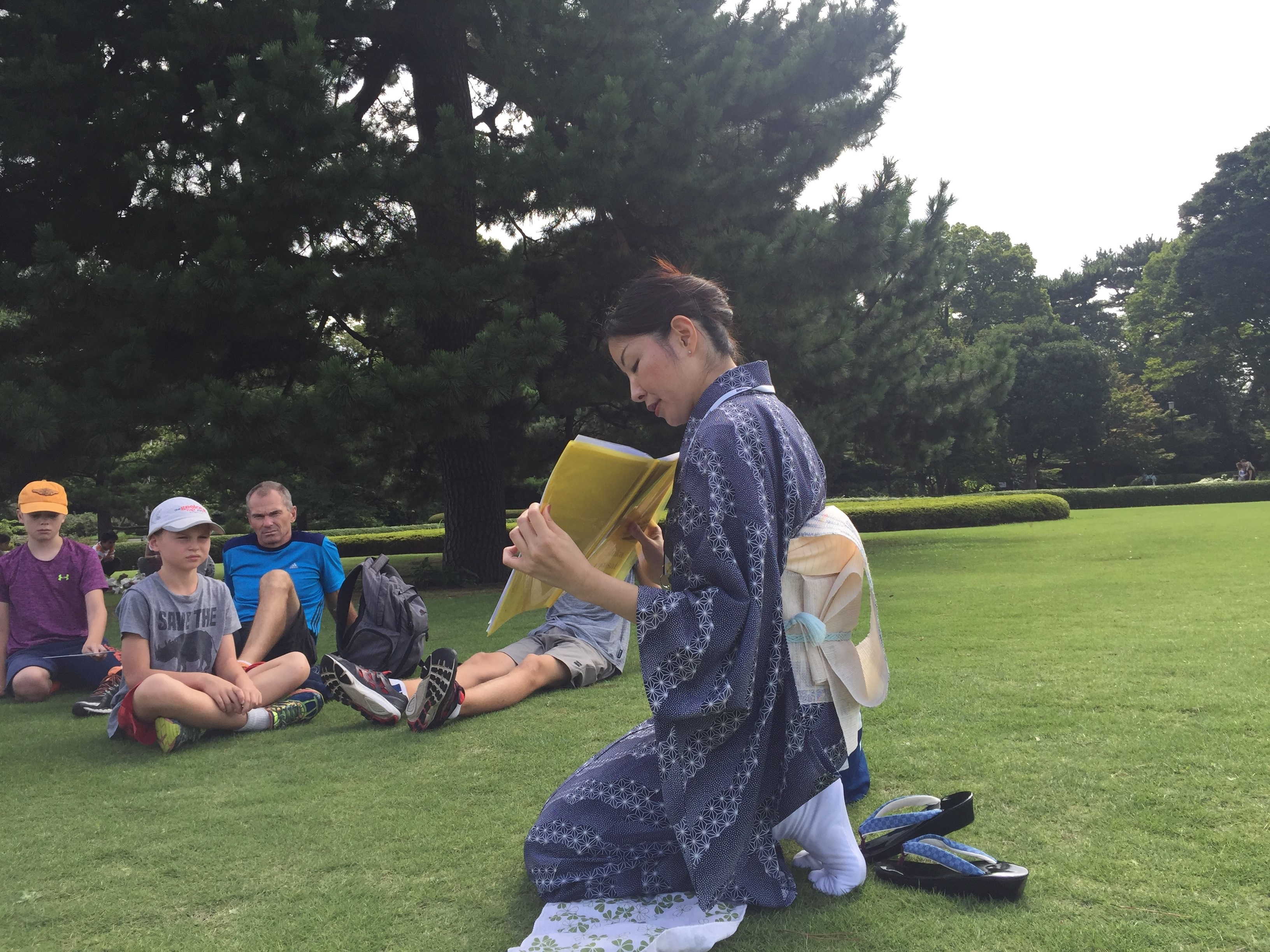Thank you for joining us. On that day we welcomed around 40 guests from USA, Israel, Nederland, U.K. Deutschland, Ostrreich, Ireland, Mexico, Sweden, Poland, Australia, Singapore, Malaysia and China. We divided into 6 groups.
It was really hot day. The temperature rose to 32 centigrade. The sky was clear and the sunshine showered us directly. So some of the guests brought parasols borrowed from the hotel as well as some of the guides did.
These days parasol, which we call Higasa has become very common. Some parasols can be used as umbrella in a rain as well and some have cooling function in it. Even men use that.
We highly advise guests to bring ones together with water and hand-fans to blow the air.
Japan’s summer is not just hot but very humid. That is the main reason that pre-modern time buildings are mostly made of timbers. Timbers can absorb moist in the air. Inside a stone building, without proper air-conditioning, walls are covered with moist which makes residents very uncomfortable.
But wooden buildings could easily catch fire. That is why castle buildings are gone and the premise turned flat green turf.
Only architectual remains in the East Garden are stone bases and a stone celler. The stone celler was to keep valuables from fire. That is why it still remains as it was.
So wooden buildings cannot last so long? Actually Japan has the world’s oldest wooden buildings. One is Horyuji Temple in Nara prefecture. It was built in 7th century.
(Photo by Wikipedia)
In Kyoto, located right next to Kyoto Station is Toji Temple, which contains the tallest wooden structure in Japan at present time, 5 story pagoda, 51 meter high. It was built in 17th century. The pagoda may have been one of the tallest wooden structures in the world at that time.
Still today, most common building for residence is wooden-made. Very suitable for the climate in Japan.
Please come to Japan and feel humidity. Then anyone can appreciate wooden-made houses.










